Juwangsan National Park: The Smallest National Park In Korea
Last Updated on April 5, 2025
Juwangsan National Park (주왕산국립공원) in Gyeongsangbuk-do, Korea was designated as such in 1976 and holds the title of the smallest national park in South Korea. But, don’t let that sway you from heading there as it’s got everything you’d want in a national park from mountains, rivers and waterfalls to tales of assassinations.
There are some really cool things to see in Korea and when looking for a spot that is a bit more off the beaten path, this would make a great one. It’s also a great place to head if you’ve got kids and want a family-friendly national park to visit.

Here’s what to know about Juwangsan National Park:
(This post contains affiliate links, which means I receive a certain percentage of a sale if you purchase after clicking at no cost to you. Thank you for your support.)
Basic Info
Address: 406 Sangui-ri, Budong-myeon, Cheongsong-gun, Gyeongsangbuk-Do (경북 청송군 부동면 상의리 406)
By Bus: From Dong Seoul Bus Terminal, take an intercity bus to Juwangsan Mt. (주왕산). The trip takes 4.5 hours. The national park is just 70 meters from the bus stop.
Admission: Adults: W3,500, Youths: W1,000, Children: W600
Where To Stay
Sono Belle Cheongsong
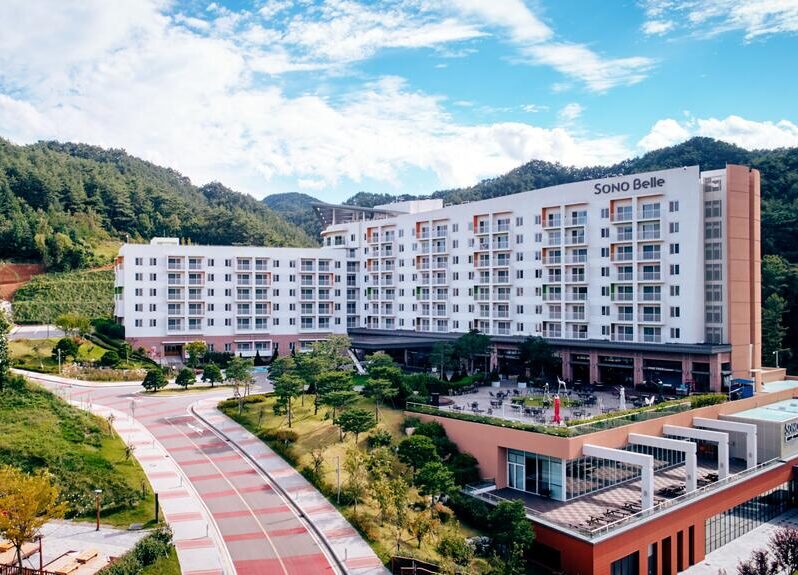
Just up the road from Juwangsan National Park, this is the best (also closest) place to stay if you want to spend a day hiking around the national park and then find an easy spot to put your head down for a rest.
Book a stay at Sono Belle Cheongsong on Booking.com or on Agoda.com
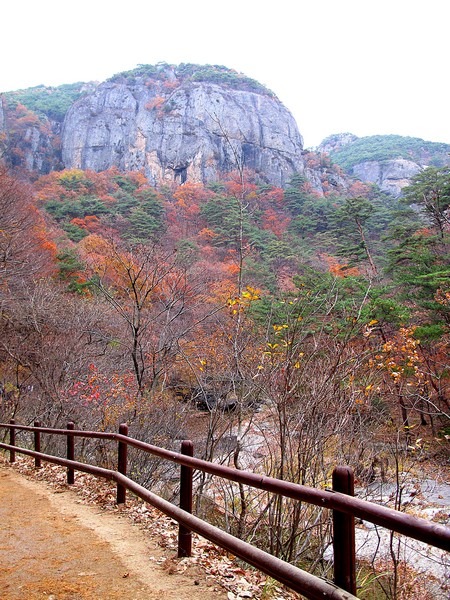


Reclaiming A Father’s Throne
Juwangsan National Park is one of only two national parks that sits on the east side of the central dividing range, the Baekdu-daegan, and is one of the most remote national parks in the country. Come autumn, hikers and nature lovers across the country head to this national park as there are trails for the avid hikers as well as scenic walking paths for the general strollers. I’m sure that is the pitch that’ll get you out to the park, but keep reading for more information just in case.

The name of this national park is said to originate with the Chinese Jin Dynasty royal family. Wanting to reclaim his family’s thrown, Zhou Du, or Juwang in Korean, attempted to overthrow the Tang Emperor but failed. Defeated, Juwang, his forces and his family were driven out of China and into Korean’s Juwang mountains.
Emperor Tang sought revenge for the attempt on his life and pressured the Shilla Dynasty to find and kill Juwang. General Ma of the Shilla army found and killed Juwang, beheading him and destroying his palace in the mountain, reads the Cheongsong guidebook.
It’s much like the dramatic stories that you read when you walk through places like Seooreung Park just outside of Seoul where the tombs of royals can be found. If you like Game of Thrones or any drama that has assassinations, beheadings, and just lots of drama surrounding royal families, it’s a must visit.

What To Expect
From the car park and bus stop, visitors first walk by restaurants and vendors selling delicious teas and of course delicious apples, the pride of the area, as well as coffee and other delicacies. This path leads to the ticket booth and the first stop inside the gates is Daejeonsa Temple that sits with a beautiful backdrop of the Giam cliffs.

Just inside the entrance to the remote Juwangsan National Park in Cheongsong, Korea sits the quaint Daejeonsa Temple (대전사) that sits with views of the high cliffs of Giam directly behind. The temple was built by the Great Monk Uisang in the 12th year of Shilla King Munmu in 672AD and was named after King Ju’s son.
According to legend, King Ju was a Chinese rebel who hid out in the mountains of Juwangsan until his death. The temple was destroyed during the Imjin War against Japanese invaders and was later rebuilt in 1672, the 13th year of King Hyeonjong’s reign. The main hall on the grounds dates back to 1672 and contains statues of Birojana-bul, The Buddha of Cosmic Energy, Bohyeon-bosal, The Bodhisattva of Power and Munsu-bosal, The Bodhisattva of Wisdom.


Peek inside Gwaneum-jeon Hall and you’ll be greeted by Gwanseeum-bosal, The Bodhisattva of Compassion. This hall is just to the left of the main hall.

Within the temple are multiple national treasures including a portrait of the Great Buddhist Monk Sa-Myeong. In front of the main hall is a three tiered pagoda with intricate edgings etched into the base.
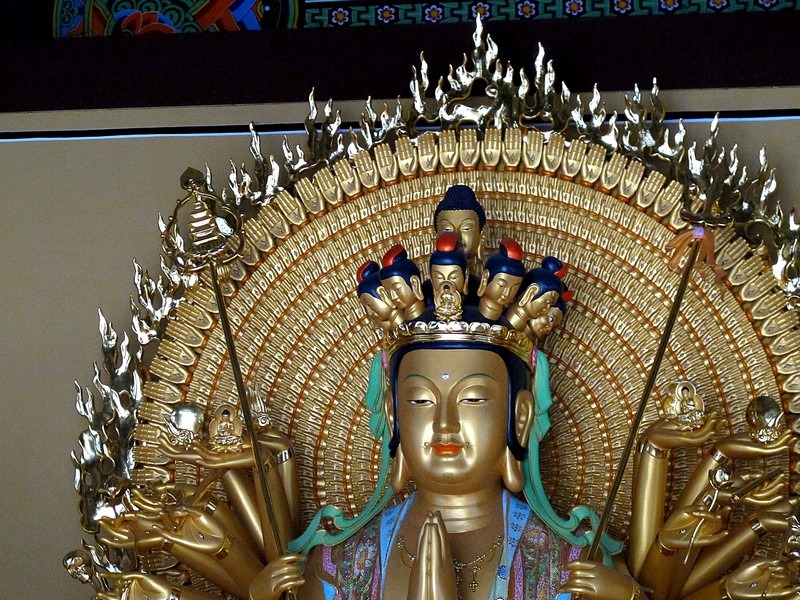
The temple offers a pleasant start to a hike up into the surrounding mountain via trails that offer up spectacular views of forest, rivers, waterfalls and more. Don’t miss out on Juwangsan National Park, actually the smallest national park in Korea.
While it’s small, it is immaculate in beauty. Due to its remote location, you are likely to be on the trails alone for some time to view the beauty of the rock cliffs and the waterfalls in the area as well.

Be sure to drink up some of the apple makkoli like any good Korean hiker would do and don’t forget to dine on the Cheongsong specialty known as blue chicken.
Passing by the temple and onto the dirt hiking trails there are numerous things to see. The path to the right first leads across a bridge and to Adeulbawi, or Son Rock. It is said that if a woman stands with her back to the rock and throws a stone through her legs that lands on the rock, she will become pregnant with a son. Want to hear about more of the pregnancy superstitions? Check out this post with what it’s like to be pregnant in Korea.
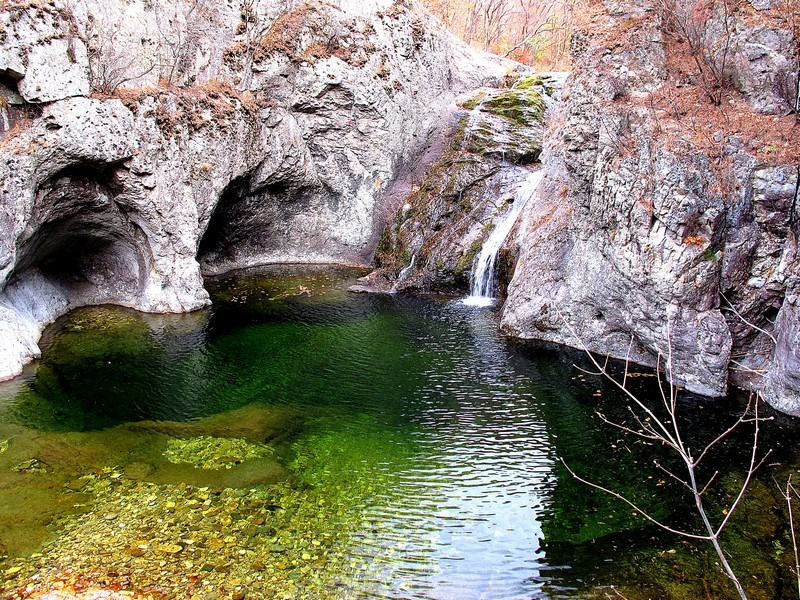
There are also three waterfalls in the park appropriately labelled as such: 1st, 2nd, & 3rd Waterfall, that have crystal clear water and are well protected from wandering tourists. Just before the first waterfall is the Sirubong Rock that seems to look like an old man overlooking the passerby, although it’s called Sirubong because to some it looks like an earthenware steamer; siru means steamer in Korean.
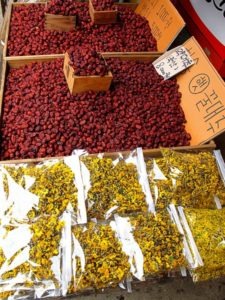
Another famous rock in the area is Geupsudae, a rock with a story of its own of course. In the Shilla Dynasty, Kim Ju-won, a descendant of King Muyeol, was in line to inherit the throne from King Seondeok, the 37th king of the Shilla Kingdom, who had no sons to succeed him, but Kim Gyeongshin revolted and was placed on the throne instead.
At the time Kim Ju-won was 80km away and blocked by a flood. Public officials thought it must be gods will, according to the sign near the rock, and placed Kim Gyeongsin on the throne.
Once Kim Ju-won arrived and saw what had happened, he fled to Juwangsan and built a palace on top of Geupsudae. There was no water on top of the rock and as water had to be drawn from the valley below it became known as “water raising rock” or Geupsudae.

The Trails/Courses
Janggunbong Peak ~ Geumeungwangi Course
- 10.3km/ 4 hours 50 minutes
- The trail starts from Sangui Parking Lot of Juwangsan National Park and passes through Janggunbong Peak and Geumeungwangi before descending to the Jubang Valley Course.
- Caution: Hikers are advised to be careful because the trail between Sangui Control Center, Baeknyeonam Temple, and Janggunbong Peak is steep, and there are many rocky cliffs.
Jubong Course
- 8.9km/ 4 hours 20 minutes
- his is the most commonly taken hiking trail in Juwangsan Mountain that passes through two waterfalls to the southeast, Sachanggol, Kaldeung Pass, top of Juwangsan Mountain, and then ends at Daejeonsa Temple.



Jeolgol Course
- 13.4km/ 6 hours 10 minutes
- It takes more than three hours to reach Gamebong Peak standing 820 meters tall. Gamebong Peak is also called Seongneumbong Peak. After reaching the top of Juwangsan Mountain, you can choose to take the hiking trail that leads to Daejeonsa Temple. It takes more than three hours to come down from the top. You can also go down to Keungol and then to Daejeonsa Temple. This trail also takes more than three hours to cover.
Woroe Course 1
- 12.4km/ 4 hours 50 minutes
- This course starts from Woroe Park Protection Area and passes through Dalgi Waterfall, the most popular waterfall in Woroe District, Neogu Village, Geumeungwangi Three-Way Intersection, and Janggunbong Peak before descending to Sangui Parking Lot in Sangui District.
Woroe Course 2
- 12.3km/ 5 hours 10 minutes
- This course starts from Woroe Park Protection Area and passes through Dalgi Waterfall, the most popular waterfall in Woroe District, Neogu Village, Geumeungwangi Three-Way Intersection, Waterfall No. 3, and Waterfall No. 1 before descending to Sangui Parking Lot in Sangui District.
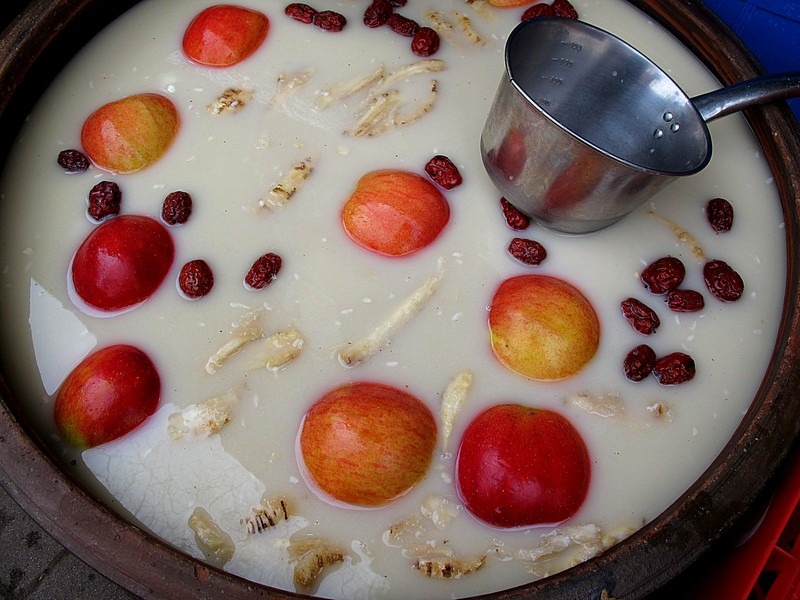
Gamebong Course
- 14.4km/ 6 hours 20 minutes
- This trail passes through Jubang Valley and Gamebong Peak (882m) before descending to Jubang Valley. There are three unnamed waterfalls in the valleys of Juwangsan Mountain, which are Waterfall No. 1, Waterfall No. 2, and Waterfall No. 3. It also takes you to Yeonhwa Cave and Jubangcheon where there are lots of squirrels.
Jubang Valley Coruse
- 9.8km/ 4 hours
- Jubang Course is the most popular hiking trail in Juwangsan National Park. It starts from Sangui Parking Lot and passes through Waterfall No. 1, Waterfall No. 2, Waterfall No. 3, and Naewon-dong. It’s located 30 minutes from Waterfall No. 3 in Naewon-dong. You will see lots of strangely shaped rocks along the waterfalls.
Did you like this post? Pin It!
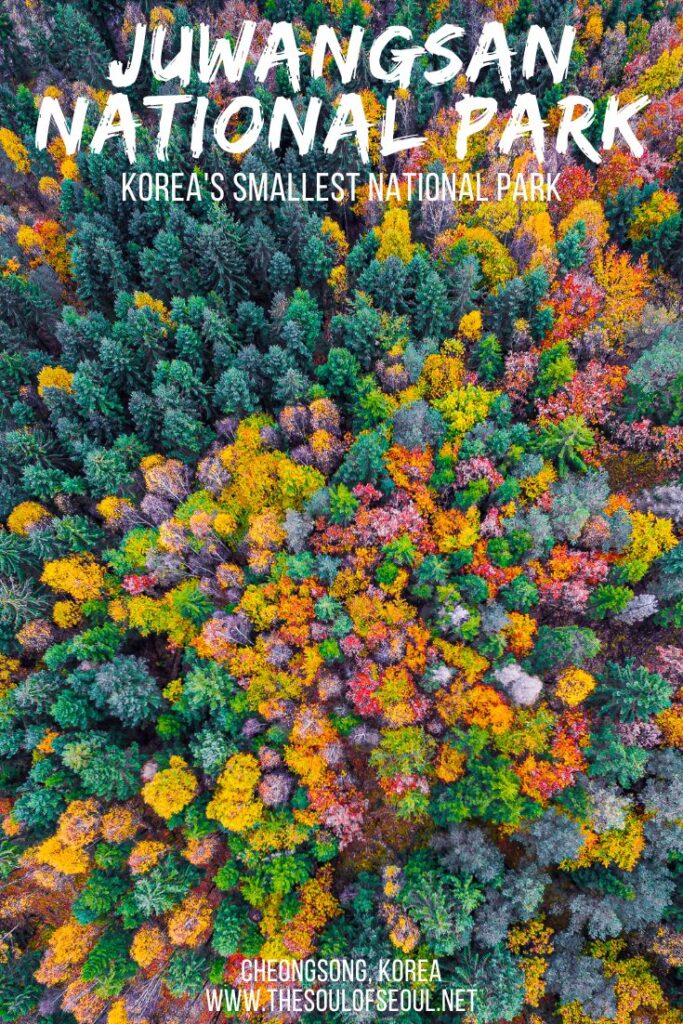
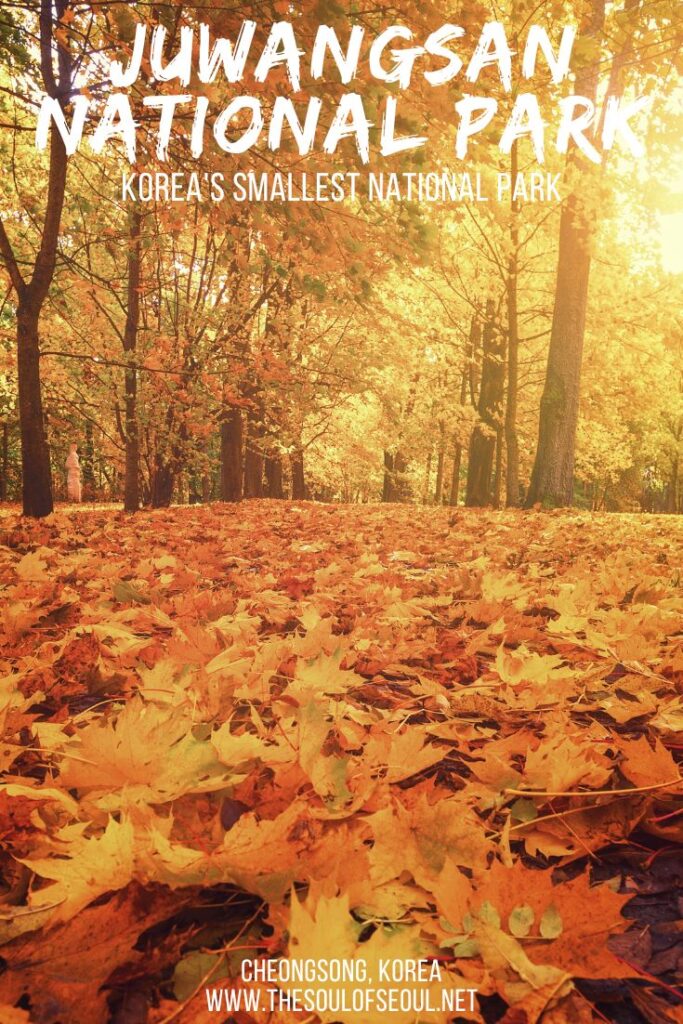


2 Comments
melody
I am very upset that I have never been here. Take me! (next fall?!)
Hallie
For sure!